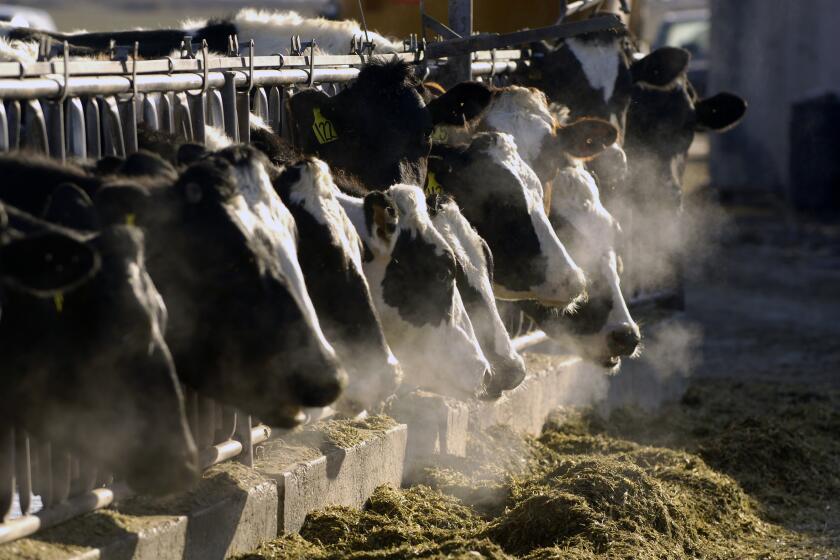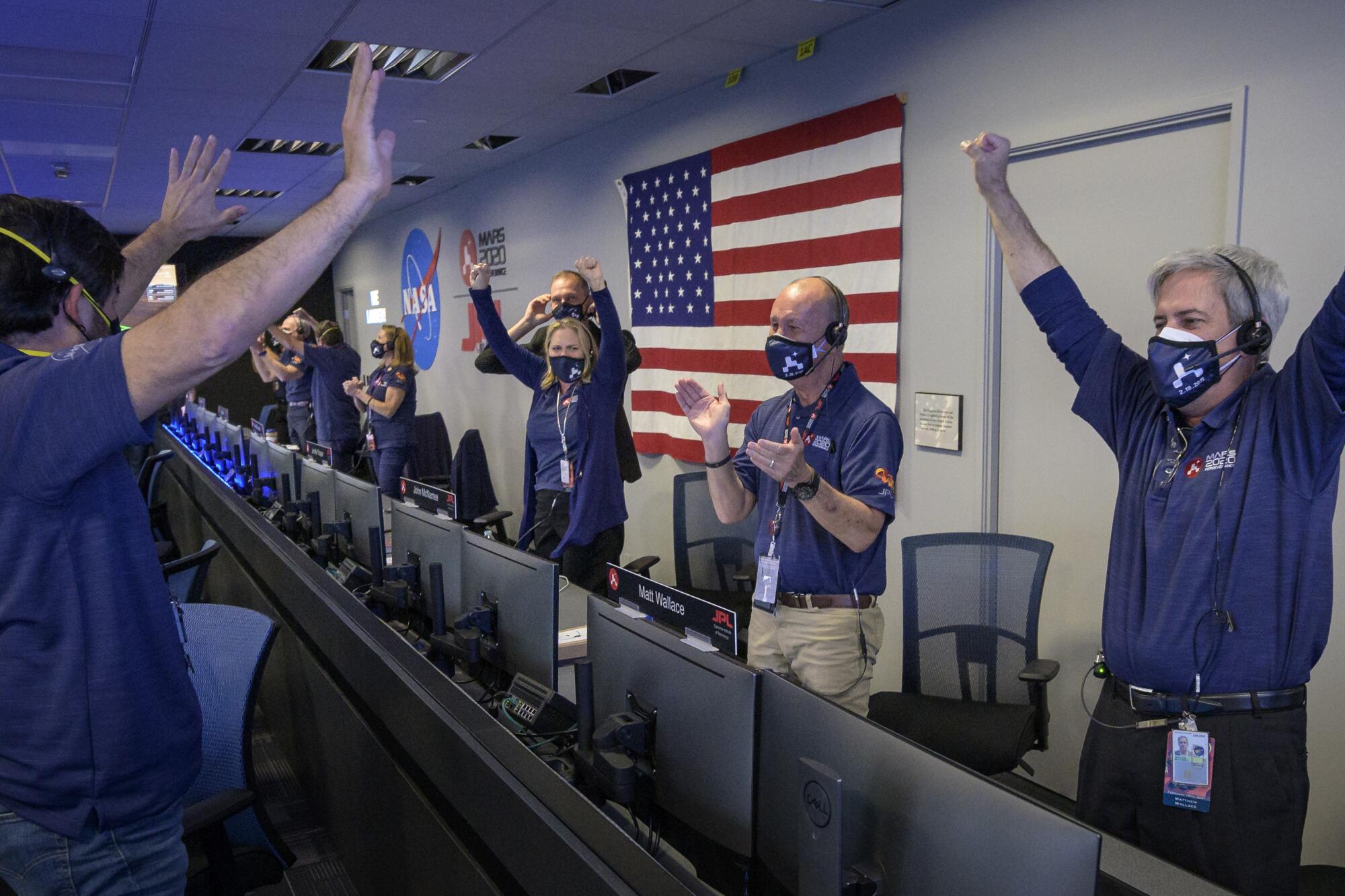
After receiving confirmation that the Perseverance rover successfully touched down on Mars, members of NASA’s rover team react in mission control on Thursday at NASA’s Jet Propulsion Laboratory in Pasadena.
(Bill Ingalls / NASA)
- Share via
NASA’s newest rover touched down safely on the surface of Mars at 12:55 p.m. Pacific time on Thursday, completing a 293-million-mile journey through space and setting the stage for a mission that seeks to find evidence of ancient extraterrestrial life.
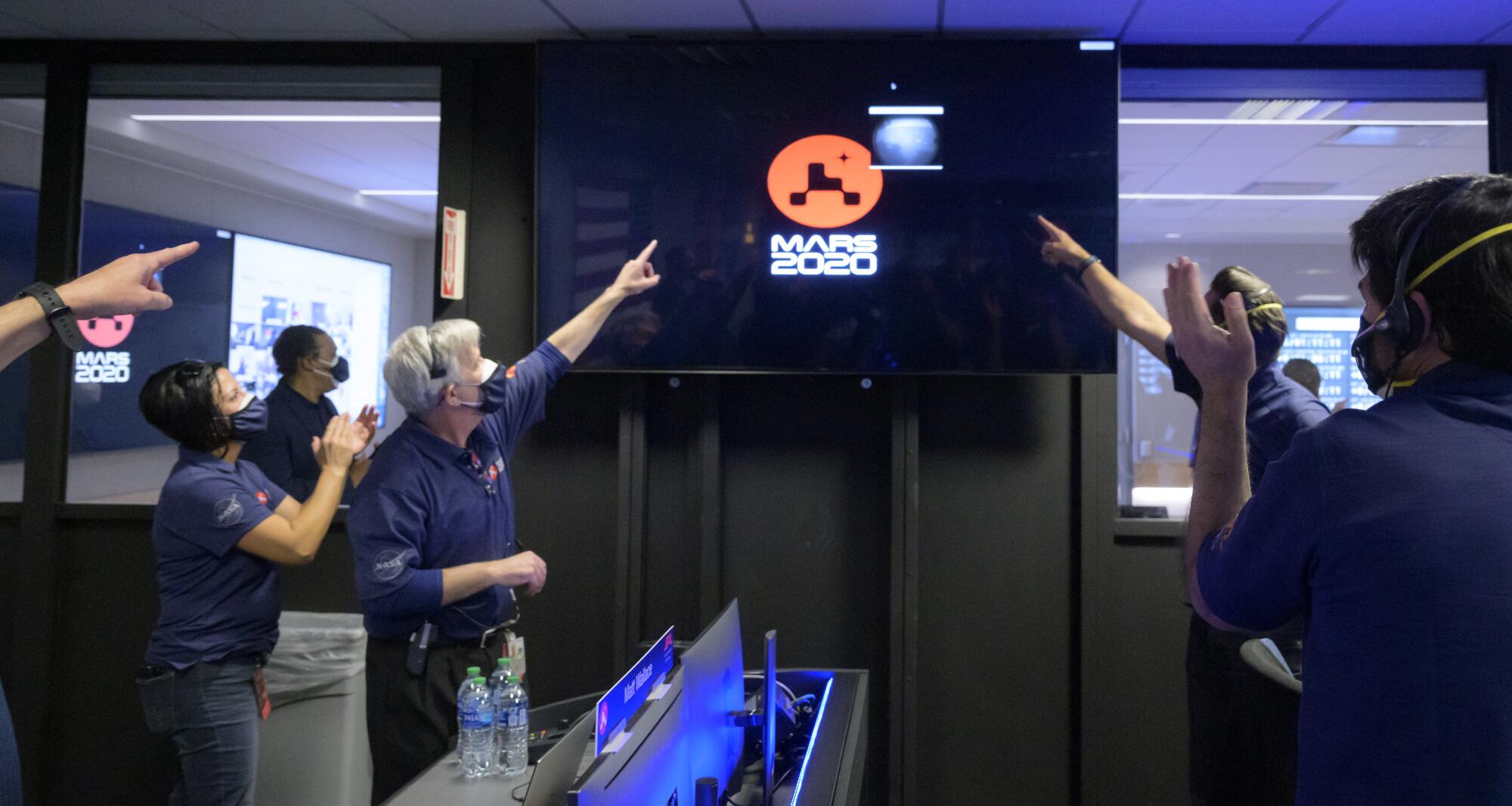
Members of NASA’s Perseverance rover team react as the first images arrive moments after the spacecraft successfully touched down on Mars.
(Bill Ingalls / NASA )

Members of NASA’s Perseverance rover team react as the first images arrive moments after the spacecraft successfully touched down on Mars, February 18, 2021 at NASA’s Jet Propulsion Laboratory in Pasadena, California.
(Bill Ingalls / NASA )
The six wheels of the 2,260-pound Perseverance rover landed in Jezero Crater, a former lakebed once fed by flowing water that scientists say would have been a welcoming home for microbes in Mars’ warmer, wetter past. If they’re right, the remains of those long-dead microbes should now reside in the sediments there.
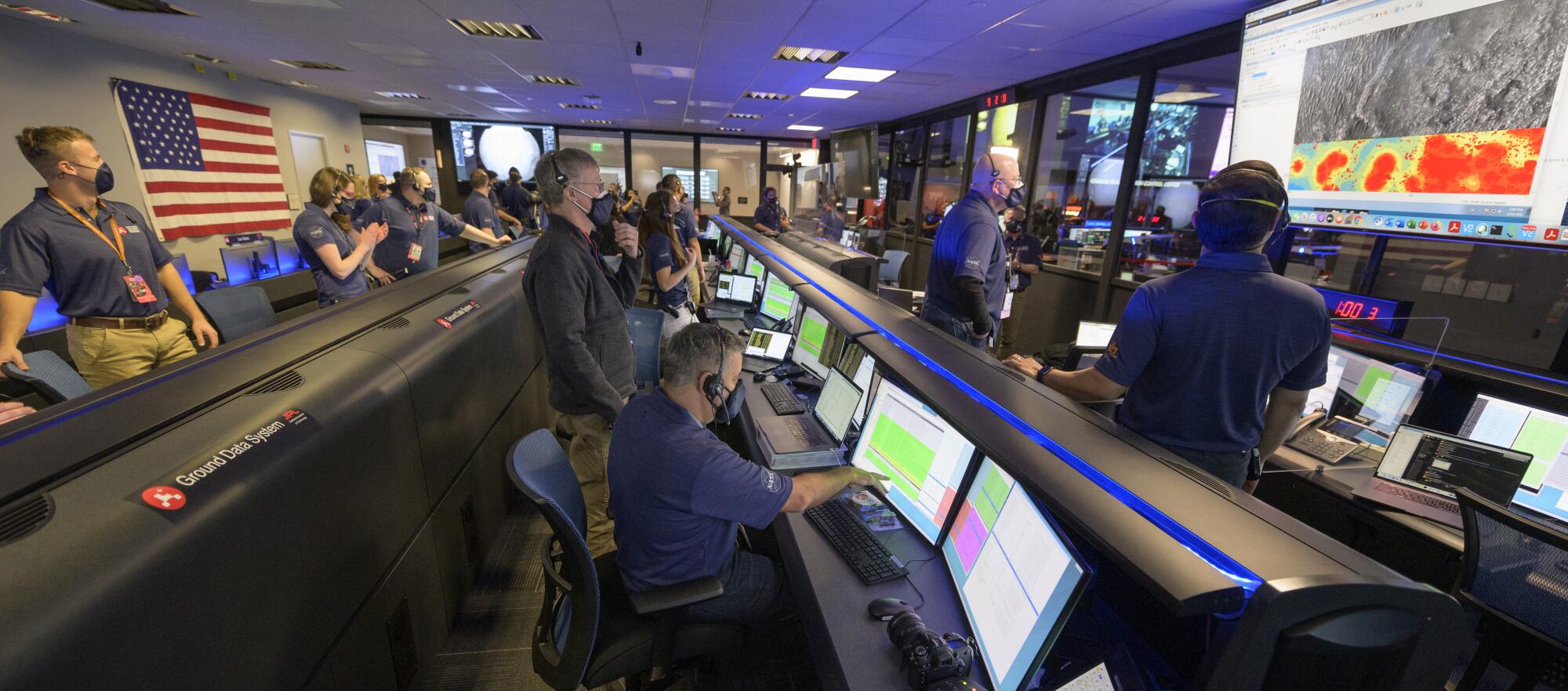
The NASA team watches the first images arrive moments after Perseverance touched down on Mars. A key objective for Perseverance’s mission is astrobiology, including the search for signs of ancient microbial life.
(Bill Ingalls / NASA)
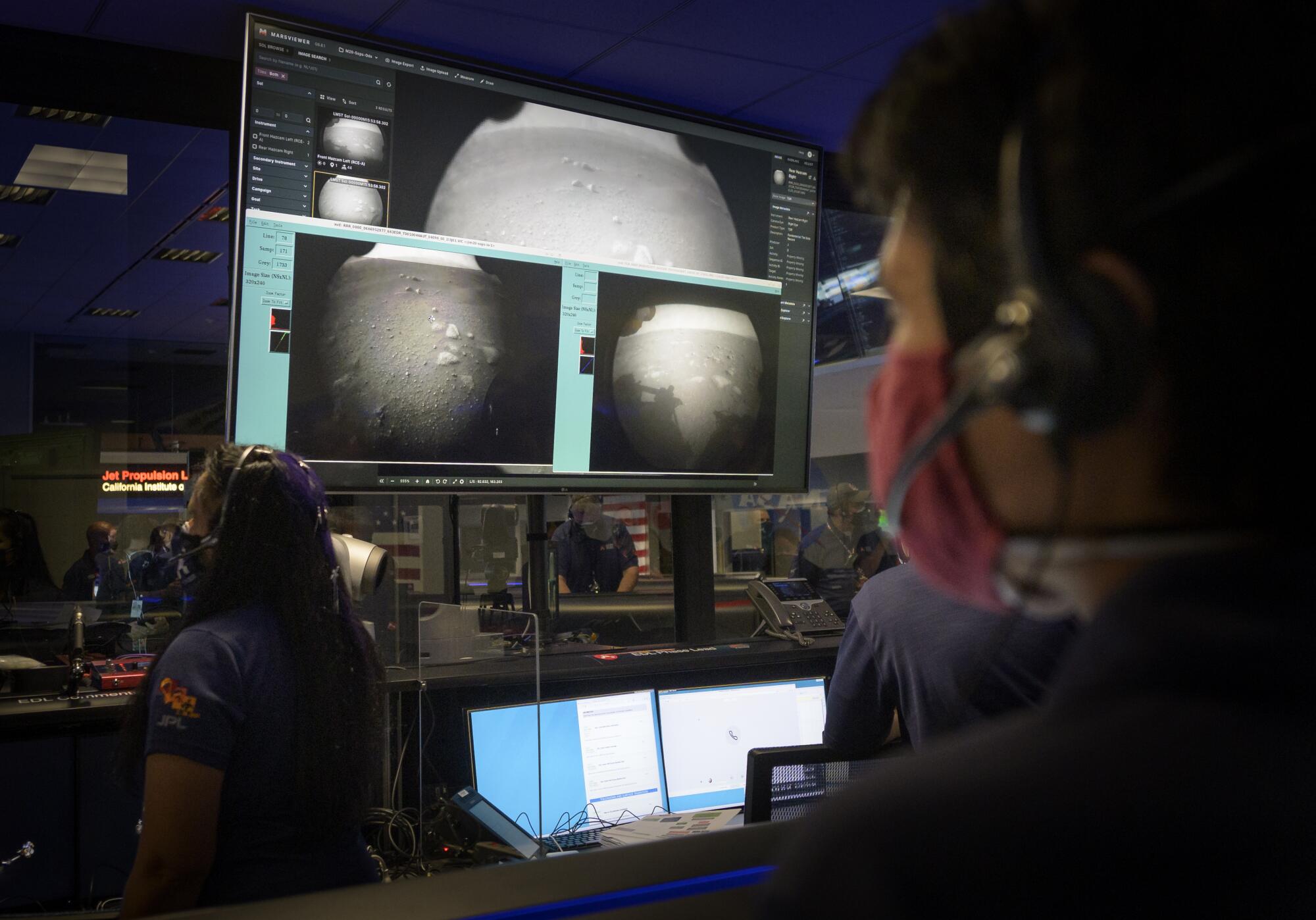
Staffers monitor images from Mars on Thursday at mission control.
(Bill Ingalls / NASA)
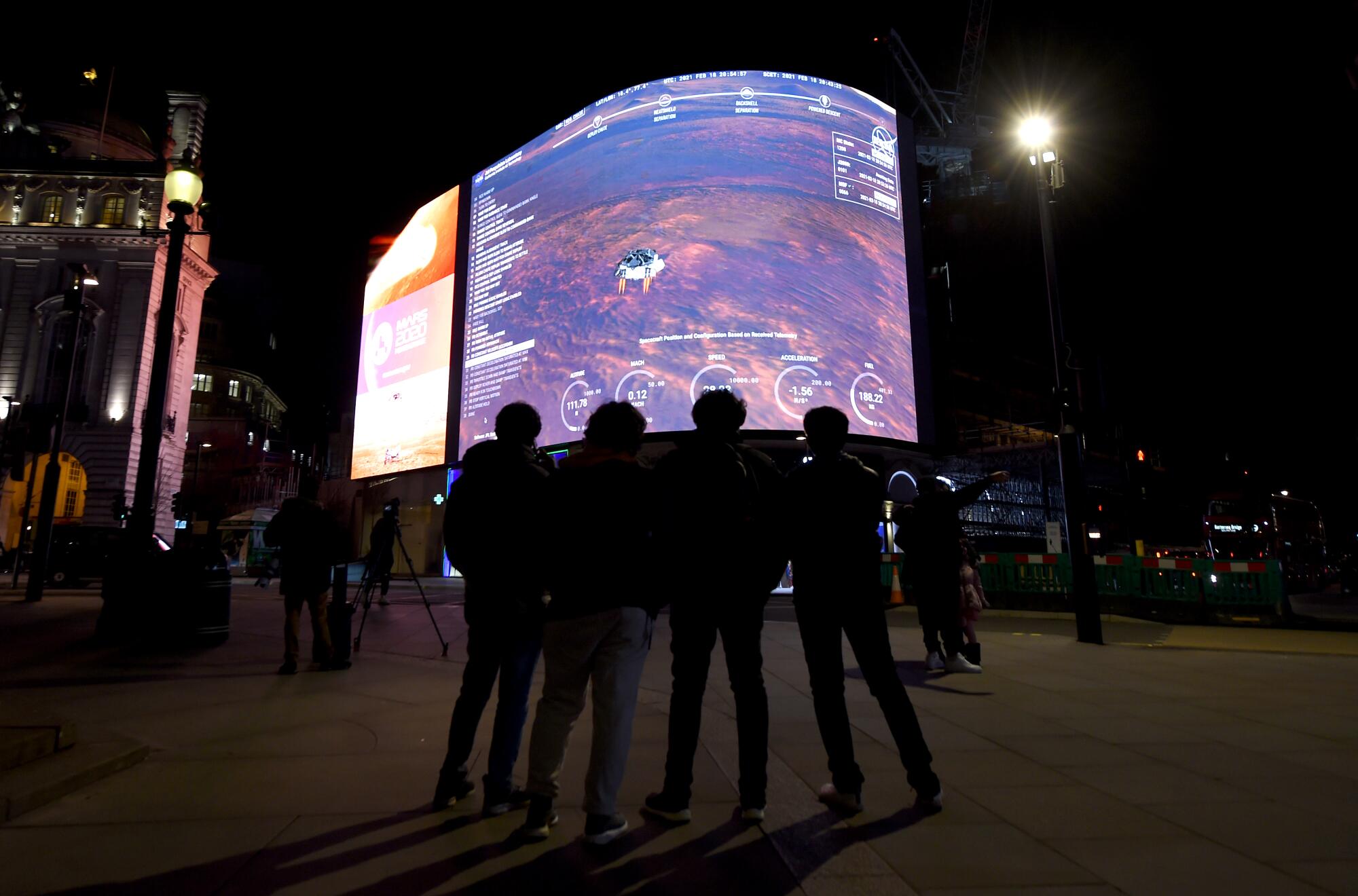
People watch a livestream tracking the landing of NASA’s Perseverance from Piccadilly Circus in London on Thursday. The rover has been traveling through space since launching from Cape Canaveral at the end of July.
(Stuart C. Wilson / Getty Images)
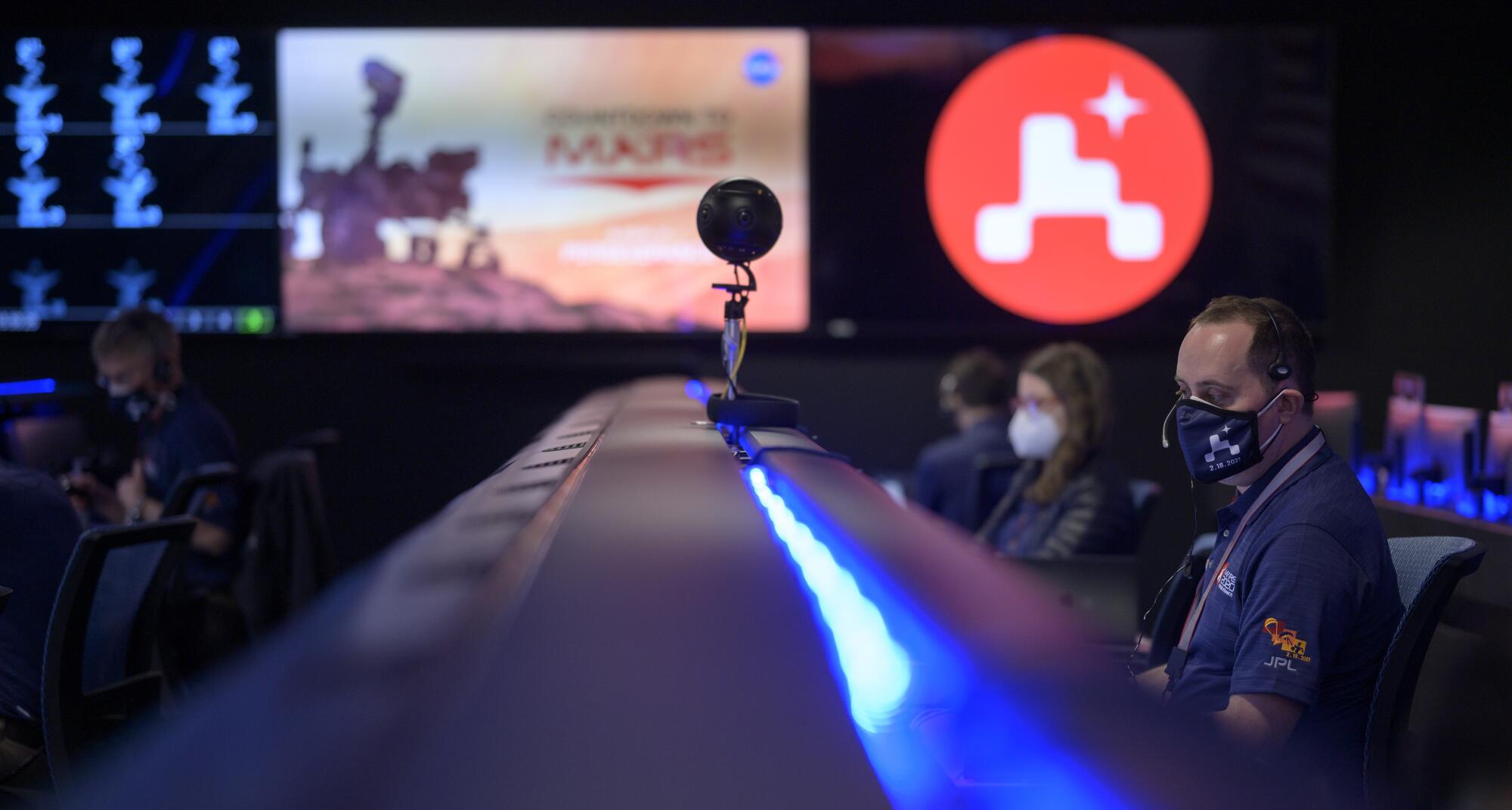
Members of NASA’s Perseverance rover team study data on monitors in mission control.
(Bill Ingalls / NASA)
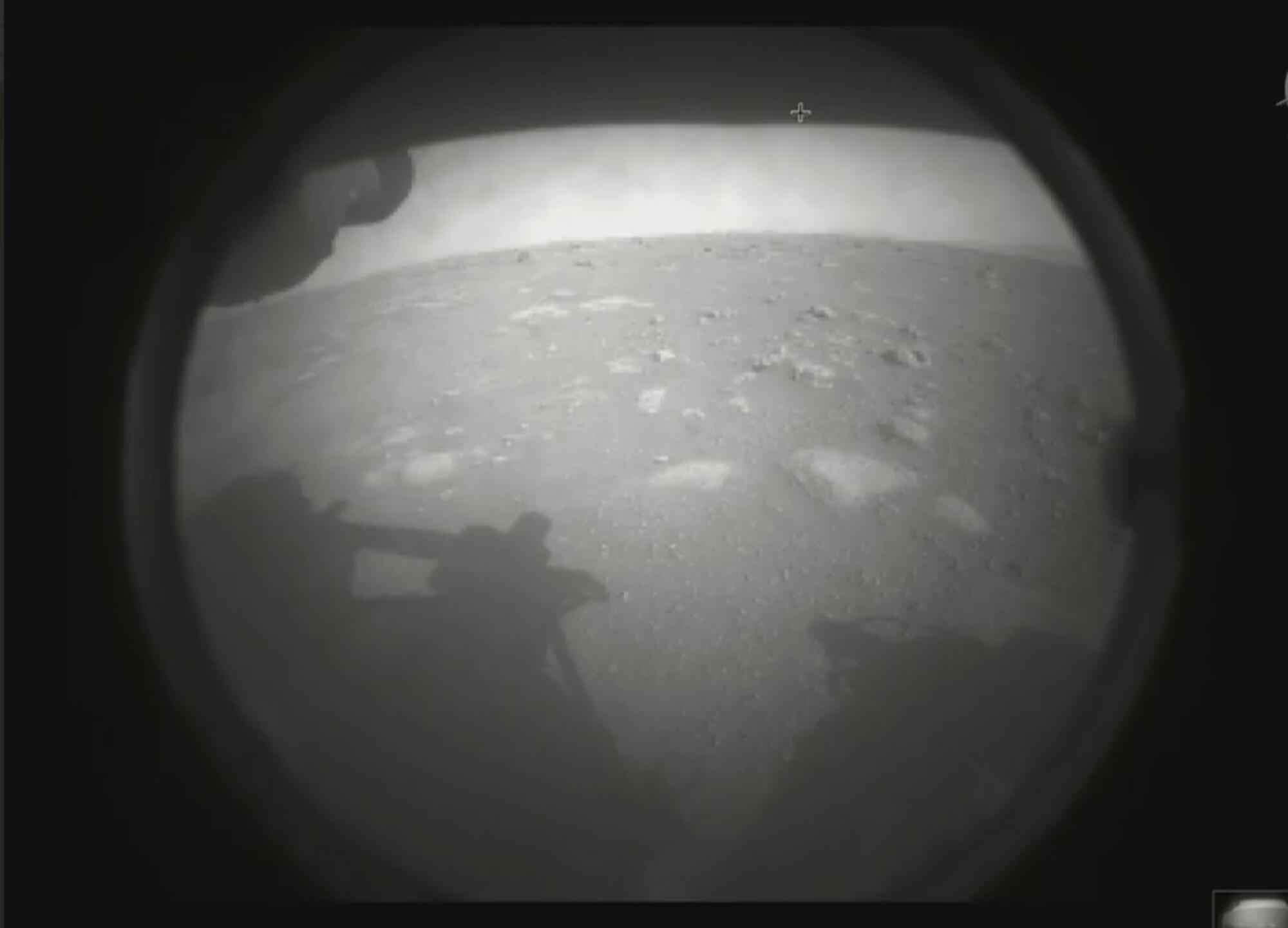
The first image sent by the Perseverance rover showing the surface of Mars, just after landing in Jezero Crater.
(NASA)
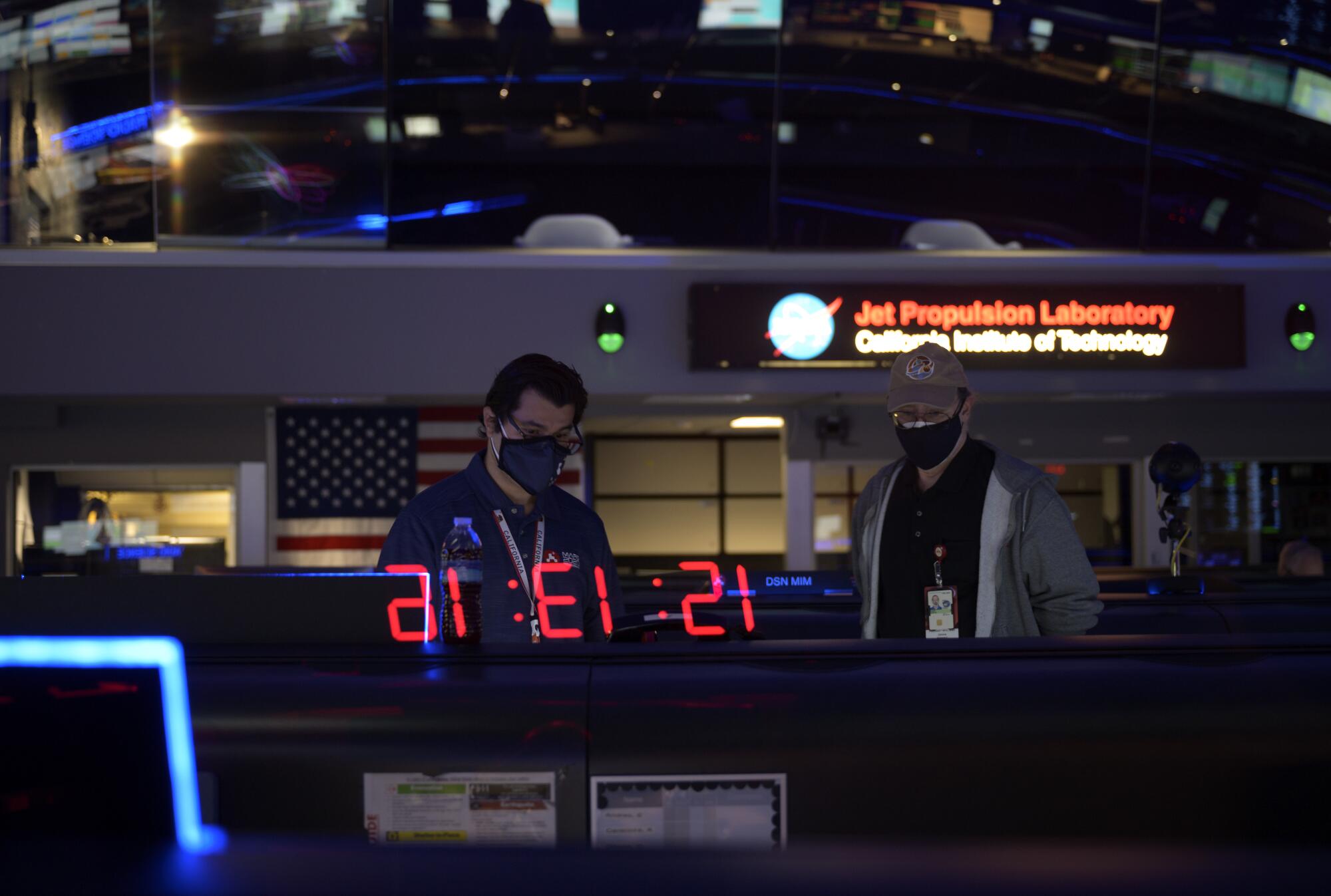
NASA’s Perseverance rover team studies data on monitors in mission control.
(Bill Ingalls / NASA)

French President Emmanuel Macron gives a thumbs-up while watching the Perseverance landing from the French National Center for Space Studies in Paris on Thursday. Perseverance carries the SuperCam instrument, built by a U.S.-France team of several dozen engineers and scientists.
(Christophe Petit Tesson / Pool Photo)
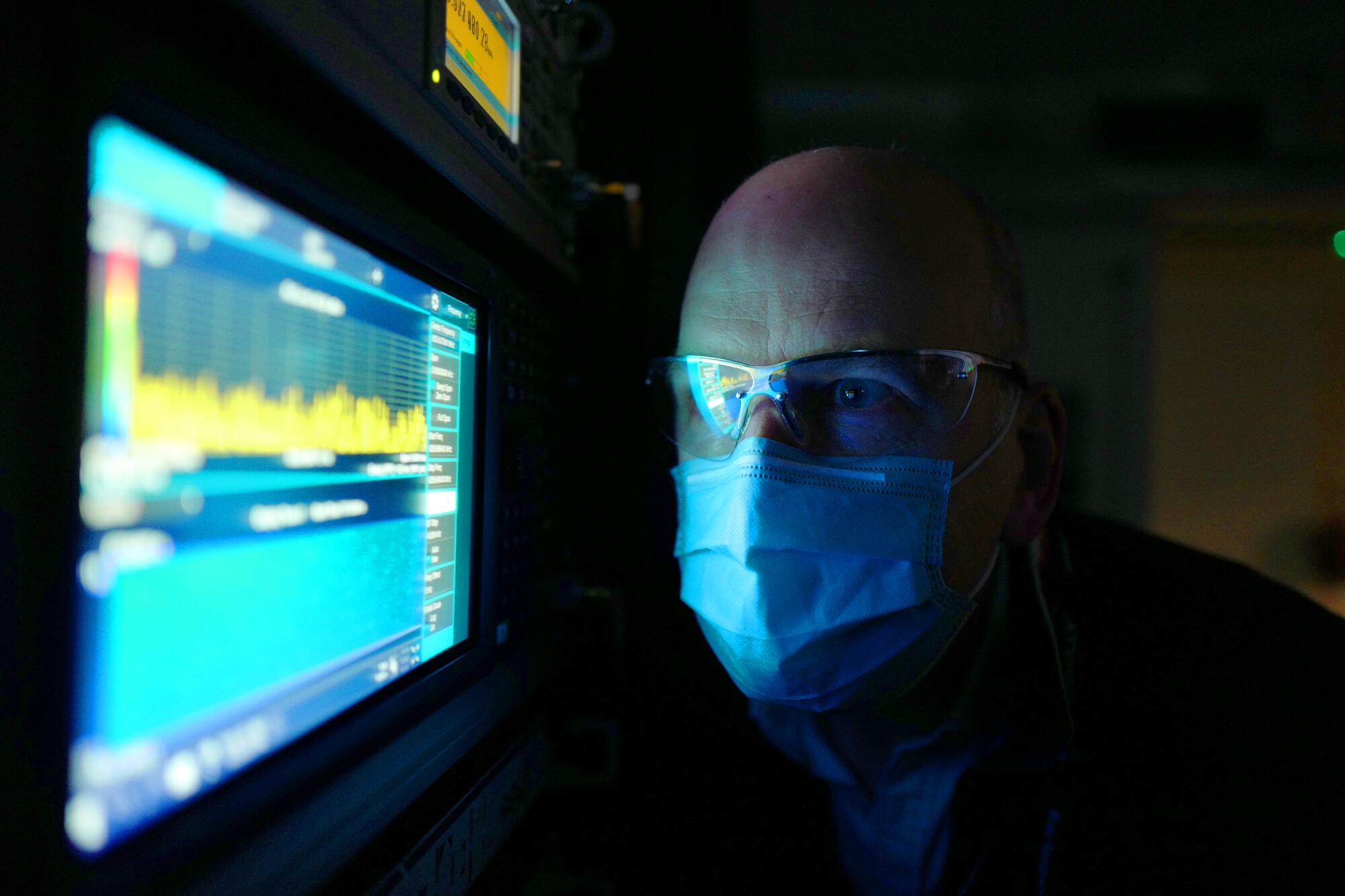
Ian Jones, chief executive of Goonhilly Earth Station, a radio communications site in England, watches live signals arrive from NASA’s Perseverance rover as it lands on the surface of Mars.
(Hugh Hastings / Getty Images)
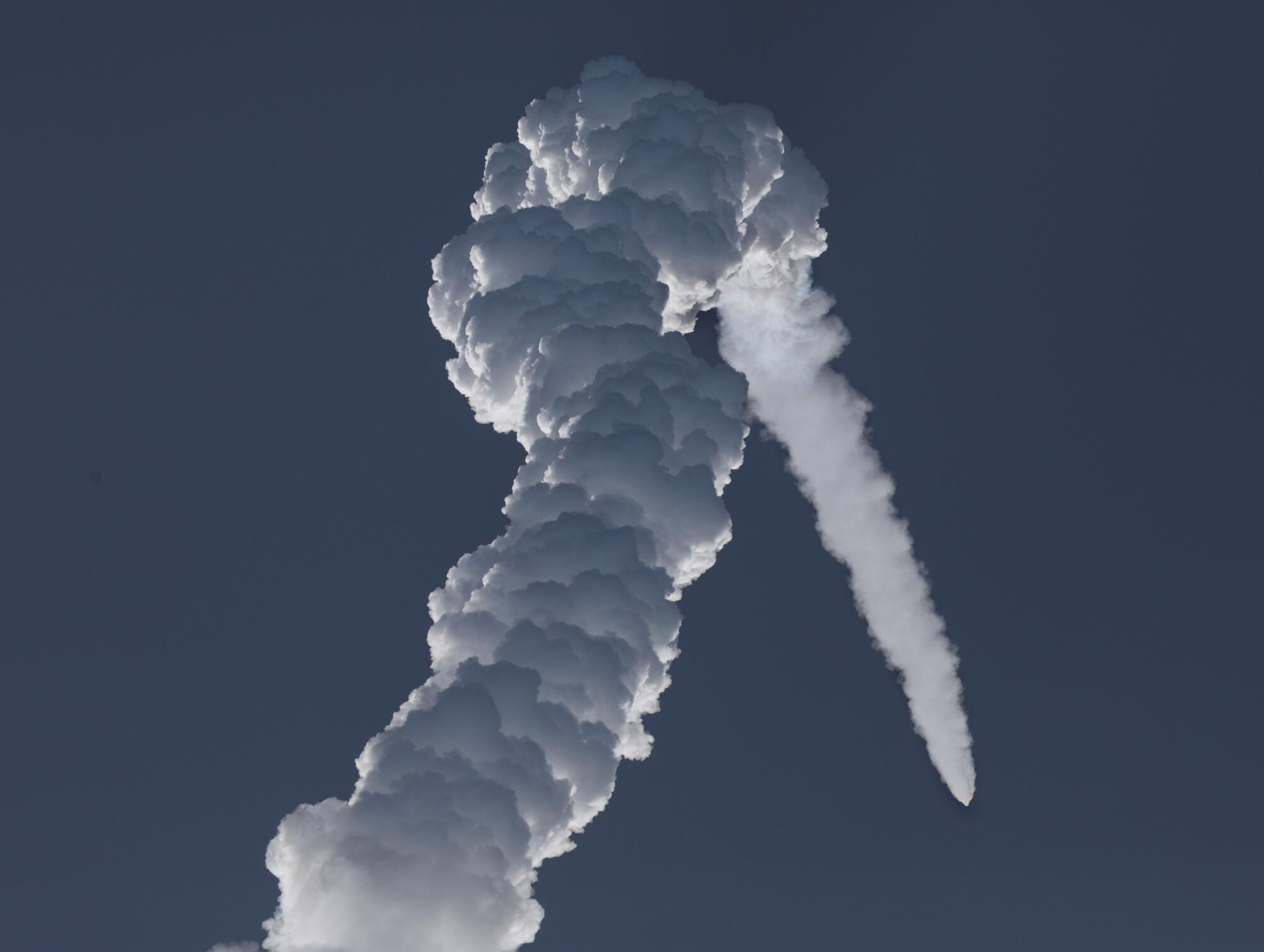
An Atlas V rocket with the Perseverance rover soars to space after lifting off from Launch Complex 41 at Cape Canaveral Air Force Station in Florida on July 30.
(Gregg Newton / AFP/Getty Images )






